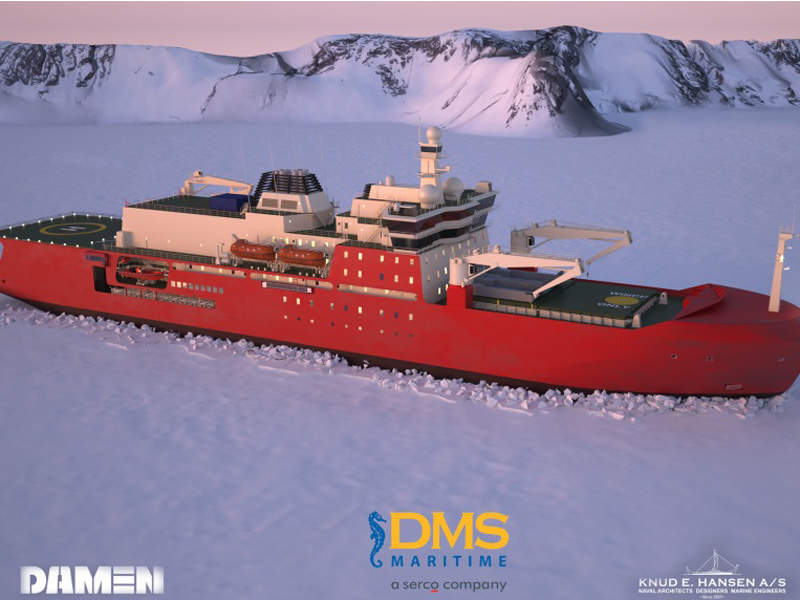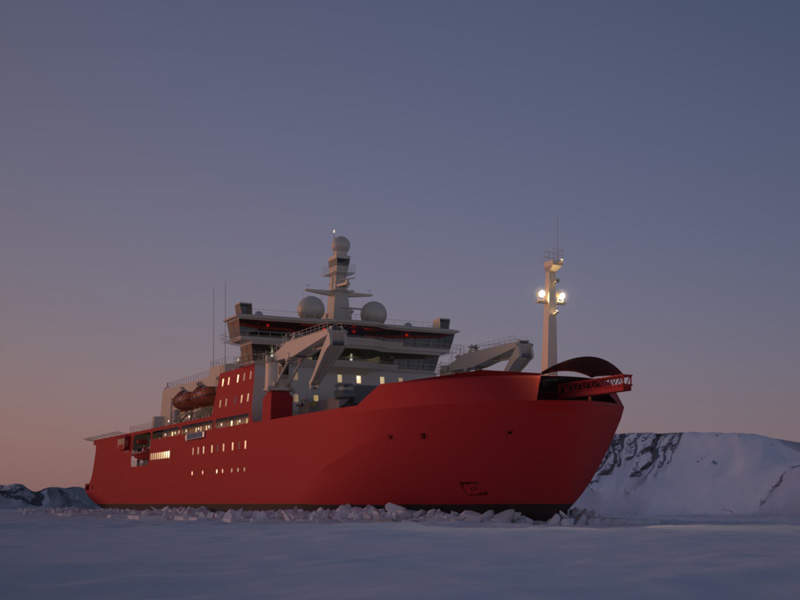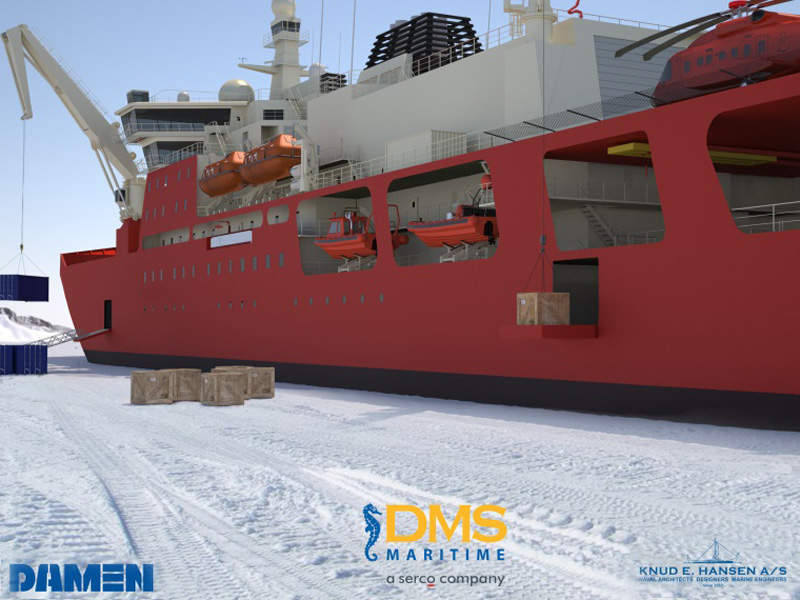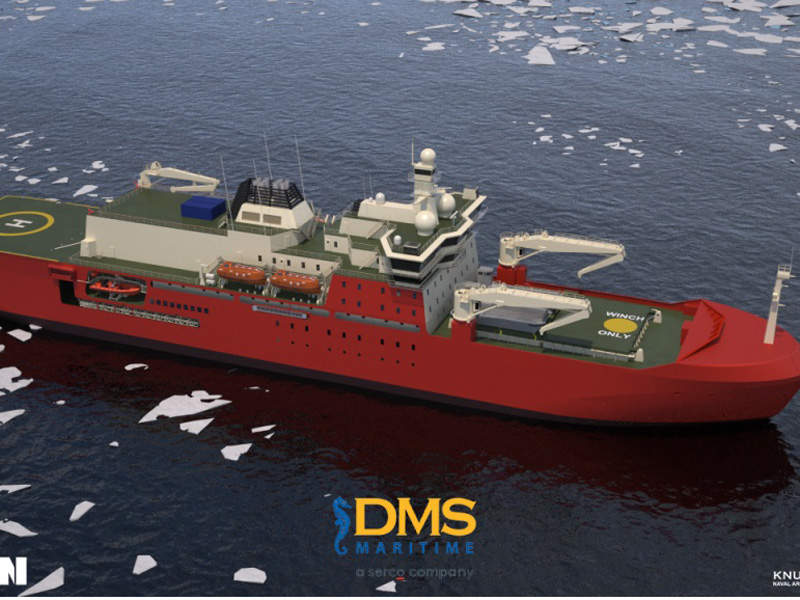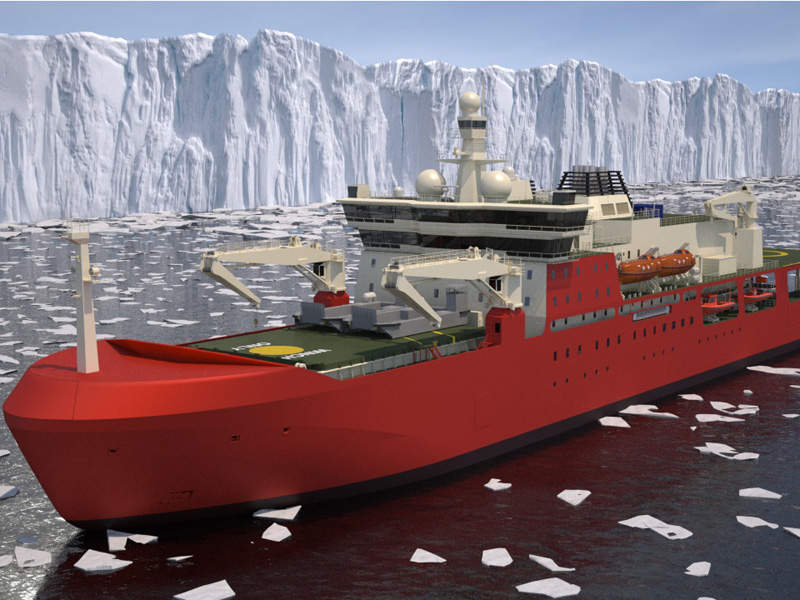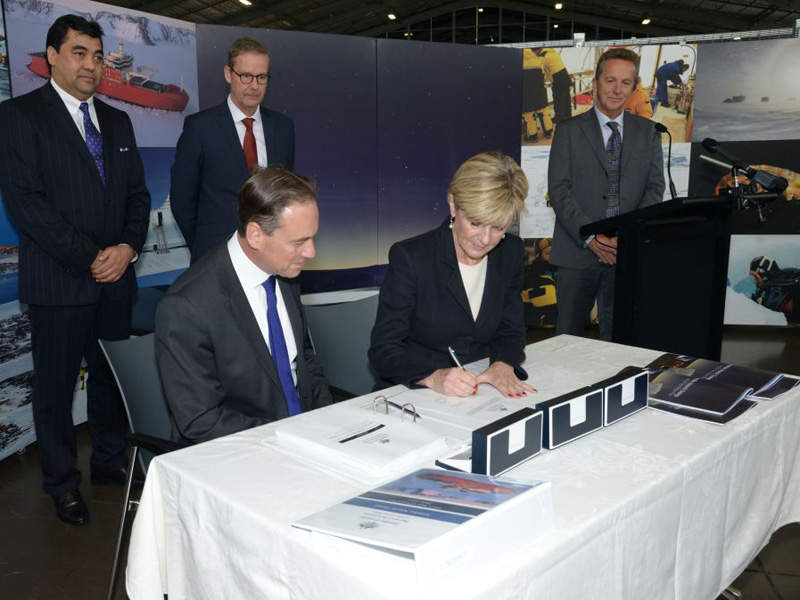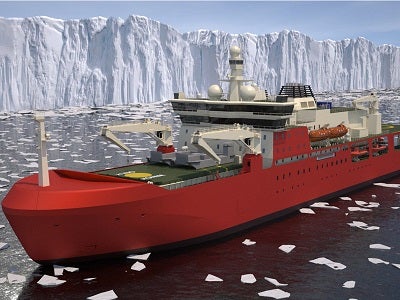
Antarctic Supply Research Vessel (ASRV), a new state-of-the-art research vessel with icebreaking capabilities, is being built for the Australian government, by DMS Maritime, a wholly owned subsidiary of Serco Australia.
Designed by Knud E Hansen, the ASRV is being constructed at Damen Shipyards Galati in Romania.
DMS Maritime received a contract from the government for the supply, operation and maintenance of the vessel in April 2016. Damen was subcontracted to construct the vessel, which is expected to cost $1.9bn, including $529m for the construction and $1.38bn for operation and maintenance for a period of 30 years.
The new research vessel is being built as part of the Australian Antarctic Division (AAD) programme, and will enable the country to explore Southern Ocean and Antarctica by supporting environmental and ecological research in the region.
The vessel will also resupply the Australian-Antarctic bases located in the Antarctic region. Delivery of the ASRV is scheduled in April 2020.
Design and features of the Antarctic Supply research vessel
The new polar research vessel will be a successor to the country’s ageing research vessel Aurora Australis, which has been in operation since 1989. The ASRV has been classified as a polar class three vessel.
The new vessel will be 156m-long and 25.6m-wide, and have a draft of 9.2m and gross tonnage of 24,000t.
It will be equipped for breaking up to 1.65m-thick ice, while sailing at a speed of 3k. It will also feature a 760m² flight deck and a 330m² hangar facility with a capacity to house two medium or four light helicopters.
Scientific equipment aboard the ASRV
The research vessel will feature science laboratories and offices spread across an area of 500m². It will also offer 24 modular science containers for research and study purposes along with science tenders, and labs for meteorology and air chemistry studies.
The vessel will be installed with an 8m stern A-frame and will be provided with a modular deep sea coring system and CTD system.
It will also be equipped with towing booms and winches, two drop keels, trawling system, forward deployment boom, wet well and ultra-pure seawater systems, and a scientific moon pool.
Cargo storage and handling systems
The vessel will provide 6,500m³ of solid cargo space, which is the equivalent of carrying 96TEU containers. The maximum cargo carrying capacity will be 1,200t.
The liquid carrying capacity of the research vessel will be 1,900m³ of diesel and 200t of fresh water. The vessel will be equipped with two 55t offshore knuckle boom cranes along with one 15t knuckle boom crane for loading and unloading of the cargo.
Additionally, the vessel will feature four 40ft-long container barges with 35t carrying capacity.
Sensor system details
The vessel will include deep water and high-resolution multi-beam bathymetric echo-sounders for sea floor mapping, a sub-bottom profiler, an acoustic doppler current profiler, mammal observation hydrophones, fishery sonar system, weather doppler radar, ultra short base line (USBL) and XBT probe system, to provide accurate research results.
Accommodation aboard the Australian polar research vessel
The vessel will provide climate controlled accommodation for 32 DMS Maritime crew members and 116 AAD scientific personnel along with one doctor. The accommodation will be offered in single and twin cabins with ensuite facilities.
The vessel will also feature galley and dining, lounges, a theatre, a fitness and yoga centre, and a medical facility.
Propulsion details
The vessel will be installed with a diesel-electric dual propulsion system integrating two controllable-pitch propellers and three each bow and stern thrusters, to produce a propulsion power of 26,600kW.
Auxiliary equipment will include four diesel generators and one emergency diesel generator set.
The maximum speed of the vessel will be 16k, whereas the speed is expected to be 8kt during silent operation.
The vessel will operate in the icy region for 90 days and will have a range of more than 16,000nmi at a speed of 12k.

